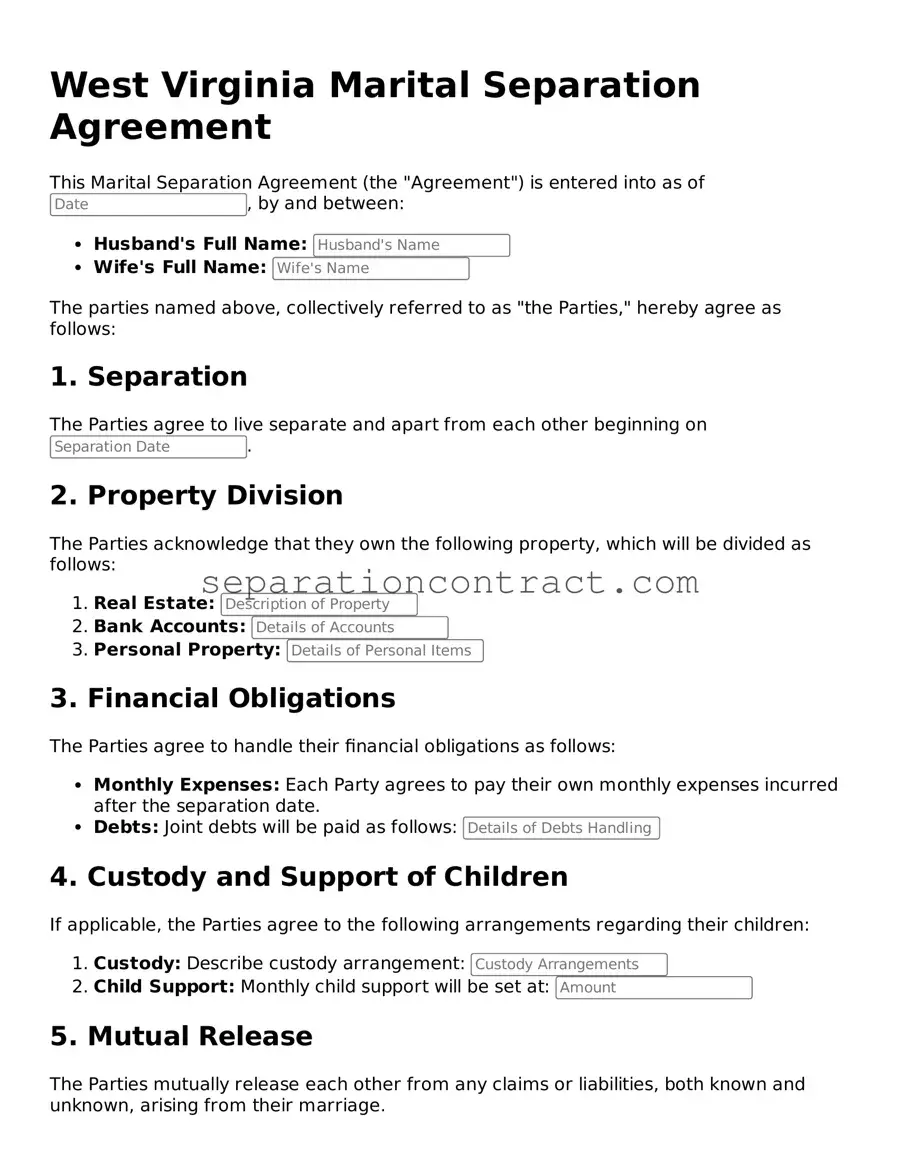When filling out the West Virginia Marital Separation Agreement form, many individuals overlook crucial details that can lead to complications down the road. One common mistake is failing to clearly define the terms of separation. It’s essential to specify the duration of the separation, as well as any arrangements regarding property, debts, and child custody. Without clear definitions, misunderstandings can arise, potentially leading to disputes later.
Another frequent error is neglecting to address financial obligations. Many people assume that verbal agreements or informal arrangements will suffice. However, it’s vital to document all financial responsibilities, including child support and alimony, in the agreement. This not only protects both parties but also ensures that there is a clear understanding of what is expected moving forward.
Additionally, individuals often rush through the process without fully understanding the implications of their decisions. It’s easy to overlook the importance of reviewing the agreement thoroughly before signing. Each party should take the time to consider how the terms will affect their future. Seeking legal advice can provide clarity and help avoid regrettable choices.
Lastly, failing to update the agreement can create significant issues. Life circumstances change, and so should the terms of the separation. If there are changes in income, living arrangements, or parenting plans, it’s important to revisit the agreement and make necessary adjustments. Keeping the document current helps prevent conflicts and ensures that both parties remain on the same page.
